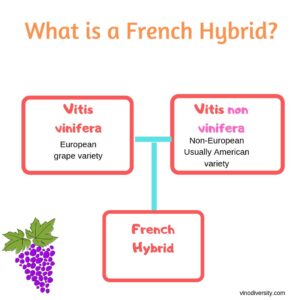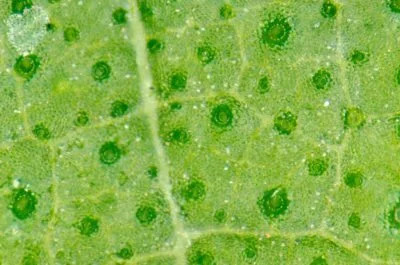How many times have you sat down with a great glass of wine and read on the label that it was made of a specific clone? Have you read an article about hybrids and wondered what the heck that meant? How about crosses? Well, you may remember them from your high school Biology days, but do you fully understand the difference the three? It really isn’t that difficult, so let’s speak #winegeek.
We’ll start off with crosses. Think back to general Biology class and genetics where  you learned about Mendel. Through his pea plant studies, Gregor Mendel, discovered the fundamental laws of inheritance. He observed that during propagation there is a segregation of parental genes. He realized that these genes were responsible for the appearance in the offspring and are in the form of dominant or recessive traits.
you learned about Mendel. Through his pea plant studies, Gregor Mendel, discovered the fundamental laws of inheritance. He observed that during propagation there is a segregation of parental genes. He realized that these genes were responsible for the appearance in the offspring and are in the form of dominant or recessive traits.
We know how “crossing” works in humans, so no need to get into that. 🙂 Since plants can’t move, it does make it a little more difficult. Plants rely on wind or insects to propagate. Very simply, a cross is produced by fertilizing the flower of one variety with the pollen of another variety. This results in creating a new variety.

When this propagation occurs in nature, it is called natural propagation. An example of this is Cabernet Sauvignon. The variety happened when my beloved Cabernet Franc crossed with Sauvignon Blanc. But humans can also play a part in plant propagation especially when it comes to producing a grape variety. South Africa’s best known grape variety, Pinotage, was created in 1925 when Abraham Perold successfully crossed Pinot Noir and Cinsault. He was trying to create a variety that tasted like Pinot Noir but could thrive in the difficult conditions in South Africa.
Taking crosses one step further, we move into hybrids. Similar to crosses, a hybrid is a coming together of genes. A cross is between two varieties from the same species, in the cases above, vitis vinifera. Hybrids occur when two different species of vine are crossed.
Have you heard about Dracaena Wines’ CHALK CLUB? $15 Flat Shipping – 3 bottles 2x/yr – Progressive Discounts Annually – Find out more by clicking the image. 

Other species of grapes include vitis californica (found in the coastal and foothills of California), vitis labrusca (concord grapes) and muscadinia rotundifolia (muscat grapes) Cool fact about muscadinia rotundifolia is that they have 40 chromosomes instead of the normal 38 in other vitis.
Hybrids were created to help the industry combat diseases in the vines. Since the American vines, which are not grape vines, they were resistant to the problems that the vinifera were falling victim to, scientists began to cross two species to try to get the best of both worlds.
Although hybrids have not been greeted with major success, there are some that have found their place in the market. In areas where vitis vinifera grape vines struggle to grow, hybrids are the success story of the region. Hybrids such as Chambourcin, Vidal, Baco Noir, Seyval Blanc grow well in the midwest, east coast, and Canada.
Finally, we get to clones. Do you remember Dolly the sheep? Yep, she was a clone. By definition, a clone is “an organism or cell, or group of organisms or cells, produced asexually from one ancestor or stock, to which they are genetically identical.” In the case of vine science, a clone is when individual vines are selected from a grape variety on the basis of desired attributes.
Dracaena Wines has received consistent 90+ ratings and multiple Double Gold medals. Order yours today and let Dracaena Wines Turn Your Moments into Great Memories!
Click to Purchase
Genetics is an unstable environment, which becomes more unstable as the as the genes get older. As a vine ages, it naturally goes through mutations. Remember Darwin’s survival of the fittest? Well it is real and it occurs in plants also. Over the years, vines must adjust to their location, climate and terrain. In order to adjust, their genes must mutate. Those vines that don’t adapt, don’t survive.
Winemakers take advantage of these mutations. When they see a trait in a vine that they like, whether it is ripening at a different time, the different flavor profile they choose that vine to propagate. By doing so, they are encouraging the “positive” genes to continue into the next generation.
You are probably most familiar with Pinot Noir clones. We see them on the labels often. “Dijon”. “Pommard” or “777” each have a distinguishing characteristic. However, other grape varieties have clones also. For example our Cabernet Franc includes a few clones including Clone 1 and Clone 4.

So there you have it. It’s been awhile since I geeked out and felt it was about time. Although these terms are some what related, they mean three completely different things and I hope this post helps you gain a bit more insight into the world of wine and maybe even lets you enjoy it even more.
~Sláinte!
Try the 90+ rated and multiple Double Gold medal winning wines of Dracaena Wines and get a 10% discount off your first order. Click the banner below. Use code “Explore” at checkout. 


Nicely done! Always good to have scientific jargon explained in laymen’s terms. And I had no idea that muscadinia varieties had an extra two chromosomes!
isn’t that a cool little wine fact?! Thanks for reading..
No description of human “crossing”? Darn!
Very interesting post.
Ha! I figured that would be a whole other type of post! LOL